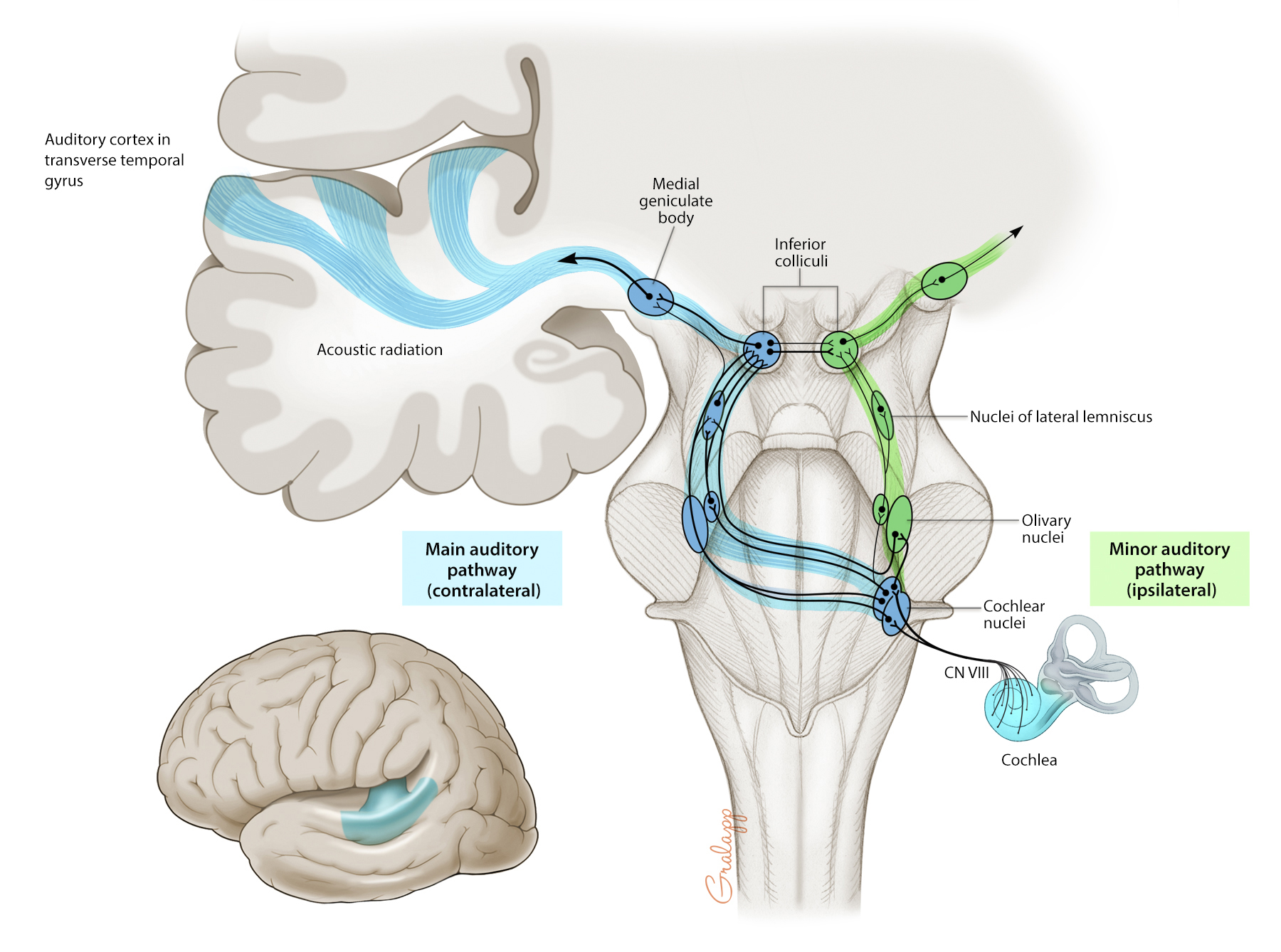

Treatment of vestibular schwannomas is aimed at removing the lesion or arresting its growth to prevent further neurologic impairment. Symptoms related to increased intracranial pressure and cerebellar involvement such as ataxia may occur. As the size of the tumor increases, it may extend into the posterior fossa. Because this tumor grows slowly, symptoms evolve over months and years and the lesion can become quite large before it is detected. The accompanying facial nerve within the internal auditory canal is more tolerant of this local mass effect, and facial nerve symptoms such as ipsilateral facial paralysis are uncommon. Sensorineural hearing loss is the result of extrinsic pressure from compression of the cochlear division of the eighth cranial nerve within the internal auditory canal by the tumor arising from the adjacent vestibular division. Patients usually present with unilateral hearing loss, often accompanied by tinnitus and vertigo. They almost always arise from Schwann cells of the vestibular portion of the vestibulocochlear nerve therefore, vestibular schwannoma is the preferred term. Key Words: acoustic neuroma, cerebellopontine angle, vestibulocochlear nerve, internal auditory canalĪcoustic neuromas, common benign tumors accounting for 10% of primary intracranial tumors, are the most common tumor in the cerebellopontine angle cistern. Although contrast-enhanced T1-weighted imaging remains the most commonly employed method for evaluation, high-resolution T2-weighted imaging provides a sensitive alternative for tumor detection. Magnetic resonance imaging is the most sensitive method of detection and also plays an important role in the follow-up of patients treated with both surgery and stereotactic radiosurgery. These tumors have specific imaging characteristics that can help differentiate them from other lesions that occur in the cerebellopontine angle cistern of the posterior fossa. Joseph’s Hospital and Medical Center, Phoenix, ArizonaĪcoustic neuromas are common benign lesions that can result in sensorineural hearing loss. Barrow-ASU Center for Preclinical Imagingĭivision of Neuroradiology, Barrow Neurological Institute, St.


Department of ENT and Skull Base Surgery.For Providers & Researchers Show submenu.Parkinson’s Disease & Movement Disorders.Center for Transitional Neuro-Rehabilitation.Rhinology: Disorders of the nose and sinuses.Examples: tonsil and adenoid infection, airway problems, Down's syndrome Pediatric Otolaryngology: Diseases in children with special ENT problems including birth defects in the head and neck and developmental delays.Examples: ear infection, hearing loss, dizziness Otology and Neurotology: Diseases of the ear, including injury, cancer, and nerve pathway disorders, which can affect the ear and balance.Examples: sore throat, hoarseness, swallowing disorder Laryngology: Disorders of the throat, including voice and swallowing problems.Examples: lump in the neck or thyroid, cancer of the voice box Head and Neck: Cancerous and noncancerous tumors in the head and neck, including the thyroid and parathyroid.Examples: deviated septum, rhinoplasty, cleft palate Facial Plastic and Reconstructive Surgery: Cosmetic, functional, and reconstructive surgical plastic treatment of abnormalities of the face and neck.Examples: hay fever, seasonal and perennial rhinitis Allergy: Treatment by medication, immunotherapy (allergy shots) and/or avoidance of pollen, dust, mold, food, and other sensitivities that affect the ear, nose, and throat.


 0 kommentar(er)
0 kommentar(er)
